A crisp-fried, mouth-watering plate of onion pakodas or onion bhajias, served with a steaming hot cup of chai, is the perfect snack for that cold, rainy day!
The Fact: Pakodas or pakoras or bhajjis or bondas are a crisp, fried snack that originated in India. They’re now seen across the South Asian sub-continent, especially across India, Pakistan and Bangladesh. They are basically vegetable fritters that can be made with onions, potatoes, cauliflower florets, spinach or even chillies.
The Inspiration: Onion pakodas, or Kaanda bhajjis, as we fondly call them in Maharashtra (India) are a mouth-watering snack that pops up on food carts and in dhabas during the monsoon season. They’re served steaming hot and are the perfect companion to a hot cup of chai (tea) on a cold, rainy day. And since rains made a recent entry after the scorching summer, and I just gave in to my pakoda cravings, I wanted to share this recipe with you. This one comes straight from my ma’s kitchen. These pakodas are ridiculously simple to make. And for those of who that worry, this snack can be hygienically put together for your family and kids from the comfort of your kitchen.
The Ingredients
Makes about 15 large or 25 medium-size pakodas
- 2 large onions
- a palmful of fresh coriander leaves
- 1 cup chickpea flour (besan or gram flour or chana dal flour)
- 1 tsp turmeric powder
- 1 tsp red chilli powder
- 1 inch piece of ginger
- 1 tsp cumin seeds (akha jeera)
- 1 tbsp coriander seeds (akha dhaniya seeds)
- 1/2 tsp carom seeds (akha ajwain)
- 1/2 tsp fenugreek seeds (akha methi seeds)
- 4 – 5 peppercorns
- Optional: 1 – 2 green chillies
- 1/2 tsp soda bicarbonate (cooking/baking soda)
- 1/2 tsp salt
- A large wok (kadhai) with oil filled half-way up to deep fry the pakodas/bhajjis
The Method
Mise en place or prep work
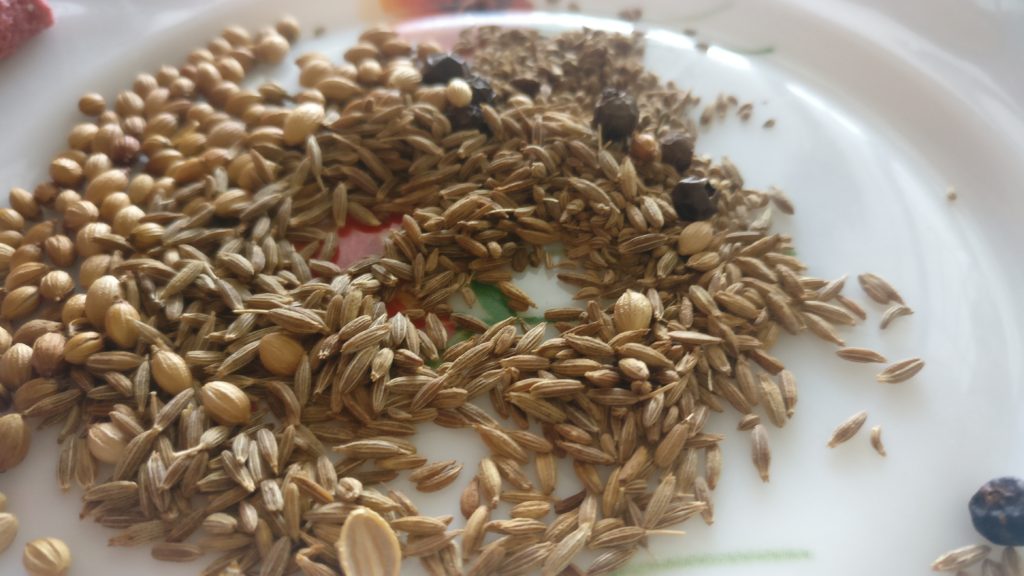
- Dry roast the cumin (jeera), coriander (dhaniya), carom (ajwain), fenugreek (methi) seeds and peppercorns on slow fire. Cool. Lightly pound the spices together to make a coarse powder. Set aside.
- Slice the onions into thick rings and keep aside in a bowl.
- Roughly chop the fresh coriander leaves and add it to the onions.
- Finely chop the ginger and green chillies (if using them) and add to the onions.
- Add the turmeric, red chilli powder, salt and soda bicarbonate to the onion bowl.
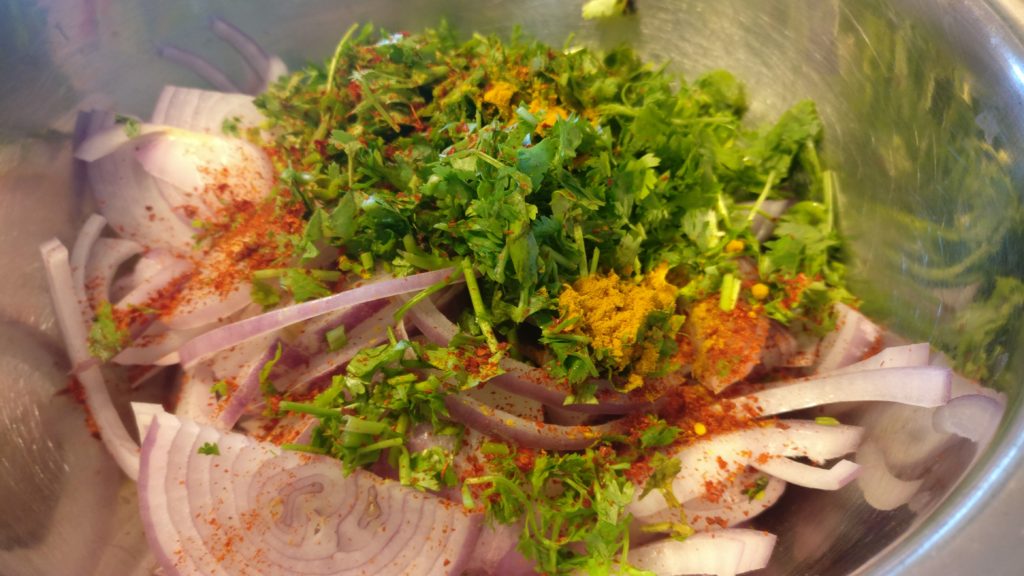
- Sieve the chickpea (besan) flour because it tends to get lumpy. Keep aside.
Making the batter
- Add a little water to the sieved chickpea (besan) flour – just until the mixture comes together and forms a thick paste. Add water by the tablespoon so that it doesn’t turn runny.
- To this batter, add the pound spices and the chopped mixture in the onion bowl. Mix well. You should have a thick batter by now. Cover and set aside.
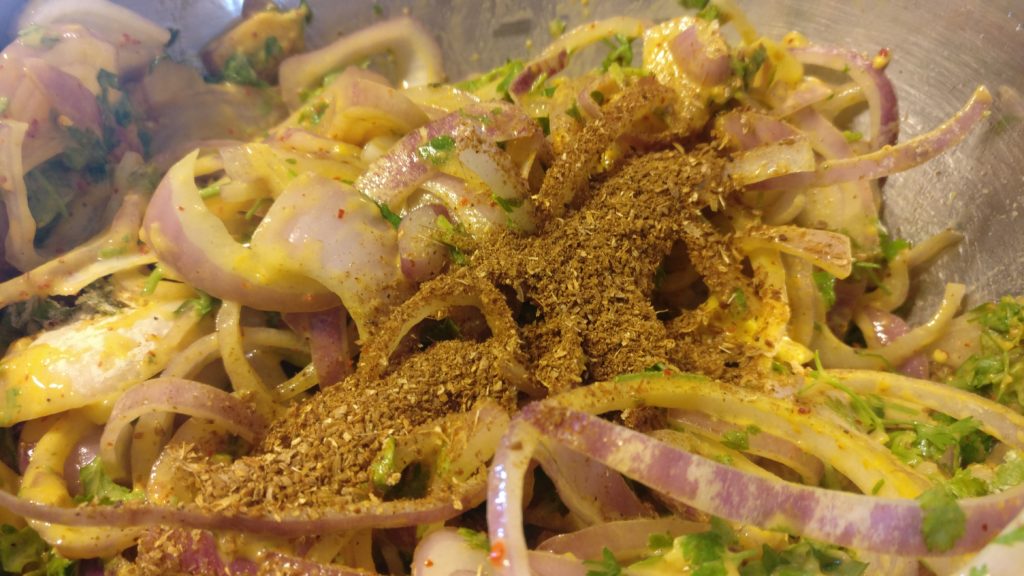
Please forgive the following image: There isn’t quite enough batter here to tell the right consistency. In reality, there should be more batter (and not so much onion). I”ll update the photo as soon as I can.
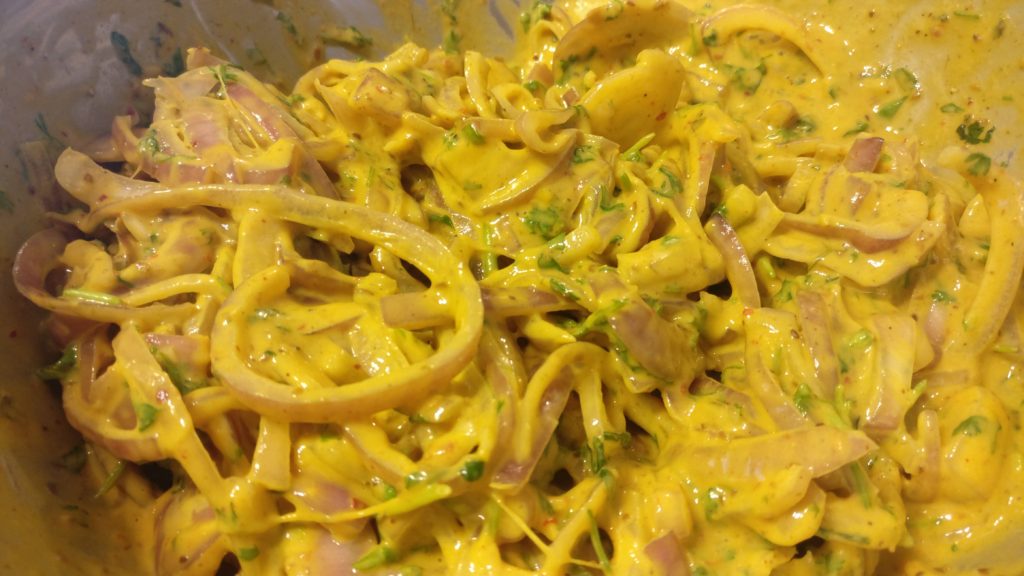
- Do not rest the batter for more than 10 – 15 minutes because the batter contains soda. Soda makes the pakodas rise or puff up. If you rest the batter too long, you will end up with tough and dense pakodas/bhajjis.
Frying the pakodas
- Place a vessel (wok/kadhai) on the stove, on high flame, with oil filled half-way up. The oil needs to be hot but shouldn’t reach smoking point. If the oil is not hot enough, the pakodas will keep absorbing oil and become dense and soggy; if the oil is too hot, the pakodas will cook/burn on the outside while the inside stays uncooked. Test the oil temperature by dropping a tiny bit of the batter in the oil and checking to see that it turns golden brown and becomes crisp when you remove it from the oil. If it burns, the oil is too hot; if it stays soft when you remove it, the oil is too cold. This test is also a great way to check the taste of the batter – you can adjust salt or spice (more chillies) at this point.
- When the oil has reached the right temperature, lower the flame to a medium one. Then, using a scoop, tablespoon or a dry hand (a wet hand might make the oil splatter so please use a dry hand) scoop out small morsels of the batter and gently lower it into the oil. The oil will not splatter on you as long as you don’t drop actual water into the oil.
- You can add several such batter morsels at a time. You’re fine as long as the pakoda batter morsels don’t stick to each other. If they do, you’ve added too many; add fewer in the next round.
- Cook the pakodas on a medium-to-high flame. The pakodas might take about 2 minutes to cook on each side.
Please do not use the oil level in the following image as a reference. I clicked this photo while frying the last batch of pakodas or bhajjis so the oil has reduced quite a bit. I’ll update the photo as soon as I can.
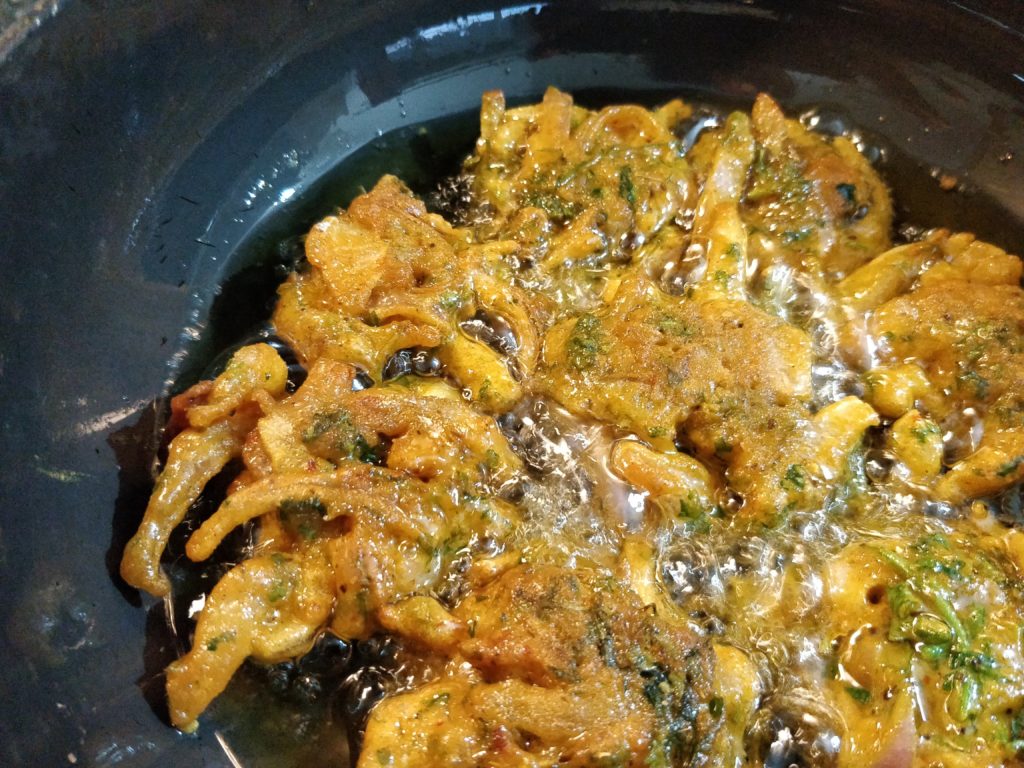
- After frying the pakoda on one side, gently flip them over, one at a time. You can test a couple to check whether they’re cooking right through and turning out crisp enough.
- Keep a sieve, placed over a plate, ready. You could also place kitchen tissues or kitchen paper towels inside the sieve. Do not use regular tissue or the tissue will stick to the pakodas. When the pakodas are done, use a slotted spoon to remove them, while draining as much oil as possible into the wok/kadhai. Place the fried pakodas on the readied kitchen tissues in the sieve.
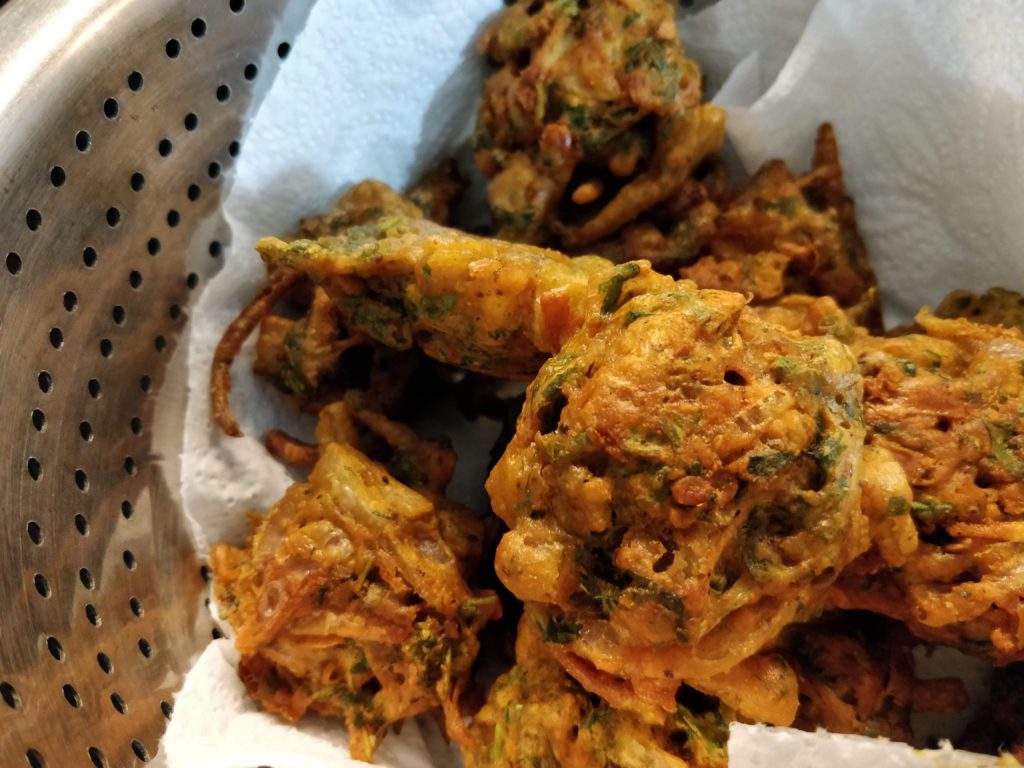
- Serve hot. Serve them plain or with tomato ketchup. Don’t forget your hot cup of tea on the side! Enjoy 🙂
